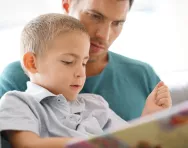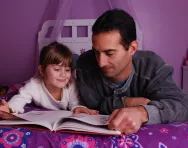Important update from TheSchoolRun
For the past 13 years, TheSchoolRun has been run by a small team of mums working from home, dedicated to providing quality educational resources to primary school parents. Unfortunately, rising supplier costs and falling revenue have made it impossible for us to continue operating, and we’ve had to make the difficult decision to close. The good news: We’ve arranged for another educational provider to take over many of our resources. These will be hosted on a new portal, where the content will be updated and expanded to support your child’s learning.
What this means for subscribers:
- Your subscription is still active, and for now, you can keep using the website as normal — just log in with your usual details to access all our articles and resources*.
- In a few months, all resources will move to the new portal. You’ll continue to have access there until your subscription ends. We’ll send you full details nearer the time.
- As a thank you for your support, we’ll also be sending you 16 primary school eBooks (worth £108.84) to download and keep.
A few changes to be aware of:
- The Learning Journey weekly email has ended, but your child’s plan will still be updated on your dashboard each Monday. Just log in to see the recommended worksheets.
- The 11+ weekly emails have now ended. We sent you all the remaining emails in the series at the end of March — please check your inbox (and spam folder) if you haven’t seen them. You can also follow the full programme here: 11+ Learning Journey.
If you have any questions, please contact us at [email protected]. Thank you for being part of our journey it’s been a privilege to support your family’s learning.
*If you need to reset your password, it will still work as usual. Please check your spam folder if the reset email doesn’t appear in your inbox.
4 things parents need to know about 'reading barriers' and how to overcome them

Some shared reading experiences leave a lasting impression upon us all. Whether it is reading with mum at bedtime, or sitting on the carpet listening to your favourite primary teacher share a story, these experiences linger with us.
One such experience for me was reading with my son, Noah, as he completed his Year 2 homework. The difficult text he faced – a tale about windmills set in Holland – tripped him up repeatedly. Drawing upon my teaching experience, I was able to help him out and coax him through the challenge. I was left wondering whether other well-meaning, supportive parents would have been able to do the same.
What do parents need to know about reading barriers?
Though parents do not need the expertise of a teacher to help with reading at home, every parent can benefit from understanding reading barriers so they can support their child. Given reading is so complex, there can be multiple barriers to becoming a successful reader.
Here are four key reading barriers and suggestions for how you can help your child overcome them.
Reading barrier: dyslexia
The most well-known reading difficulty is dyslexia. It describes how children can struggle to match letters to sounds with accuracy. It's estimated that up to 1 in every 10 people in the UK has some degree of dyslexia, with 4% of children affected in a more severe way.
Parents of dyslexic children need close support from school and teaching professionals, but many children can struggle matching letters and sounds as a more mild barrier.
For most younger children, they need to be taught the special code that matches letters with sounds, the alphabetic code, typically with an approach called phonics.
How you can help at home:
Seek out opportunities to notice sounds in words: spotting rhymes, spelling patterns (could, would, should), breaking down words into individual sounds and blending them together are all phonological skills you can practise with your child. More structured phonics skills learning is also available if you want to support your child's reading at home in the same way as they would be taught in school.
Reading barrier: faltering fluency
Reading fluency is the ability to read in a way that sounds ‘natural’ – just like talking. You can spot when you child isn’t fluent, as they trip over words and lack a smoothness or expression in their voice.
How you can help at home:
Read to your child, aloud – something which they will continue to benefit from even after they have learned to read for themselves.
If you're looking for some great books to read out loud, we recommend some fantastic stories:
- Best books to read with five year olds
- Best books to read with six year olds
- Best books to read with seven year olds
- Best books to read with eight year olds
- Best books to read with nine year olds
Being a role model of an exciting, fluent reader can be great fun (adopt different voices or even accents for different characters, if you're brave enough!). As part of a shared reading session, take it in turns to read so your child gets the chance to practise their own fluent delivery.
Reading barrier: comprehension
The crucial goal of all reading is to take the sounds of the page and to make meaning. Reading comprehension is when you understand a narrative, or follow some instructions, with relative ease so that it makes sense.
Each time a child reads a tricky text they are trying to build a sense of the world of the text. For many children – as many as 8% of children are labelled ‘poor comprehenders’ – they can struggle to follow a plot or answer more sophisticated questions about a character in a story.
How you can help at home:
A great way to enhance the comprehension of a text is to ask lots of good questions. Before you read with your child, ask them what they can remember about the book; after you read, prompt them to predict what is going to happen next and why.
Reading barrier: lack of motivation
It is common for children who find reading a challenge to quickly lose motivation to read independently. A vicious circle ensues; every time a reading opportunity is missed, they may fall a little bit behind their peers and soon enough, they don’t believe they are a good reader. A depressing, self-fulfilling prophecy can occur.
How you can help at home:
If your child isn’t motivated to read, then they may struggle to find a book of interest and be reluctant to read anything at all.
Talk with your child and offer them ‘bounded choice’ – that is to say, picking from two or three books. This offers some choice, but support in the selection too.
Don't worry about the "quality" of what they are interested in reading: comics, magazines, online information, non-fiction silly facts compediums, reading series (like Beast Quest or Rainbow Magic), football books or cricket books or rugby books, the same books again and again... reading is reading and should be celebrated.
It's hugely important to be a reading role model yourself, too – whether it's online news, "comfort" fiction or a best-seller you've been looking forward to, the more your children see you reading, the more they will see it as a normal (and hugely enjoyable!) part of everyday life. Happy reading!
Alex Quigley is a parent and former teacher. He now works for an educational charity, whilst writing books for teachers. His latest book is Closing the Reading Gap (£16.99, Routledge). You can find him on Twitter at @huntingenglish









